From the Wood to the Sawmill
Selecting trees
Several trees come down every year at Lisnavagh (let alone around the rest of the country), and from these trees we can select the timber that is suitable to bring into the Lisnavagh Timber Project for further processing. Trees come down for a number of reasons.
- They get blown over in high winds (called “windblow”).
- They are felled because they are dead, dangerous or diseased/rotting.
- They are felled when woods are being thinned. (Thinning is the removal of selected trees which are competing or interfering with other trees. This is done in order to allow better trees to grow on.)
- They are felled when a wood is clear felled (i.e. all of the trees in a wood are felled at once, usually when the trees are mature, or over-mature). Clear felling of hardwood/broadleaved woods is fairly rare now.
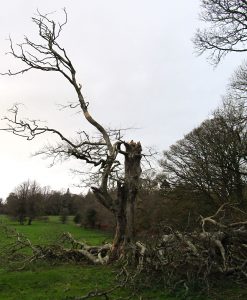
We do not fell trees just because the Timber Project needs the wood from them! If we fell a tree, it is for reasons of good forestry practice or safety.
When a tree comes to our attention, we go out to see it. If it seems suitable, we take a record, including photographs, notes on the species, condition, dimensions of commercial timber, the date and reason it came down, etc. The tree is given a unique reference number. These details are then listed on our database.
At this point, the tree may also be marked up to give guidance to the chainsaw operator as to where to joint the tree into logs.
After a while, a good number of trees and logs are ready for felling and/or jointing and collection and the next stage of the process begins.
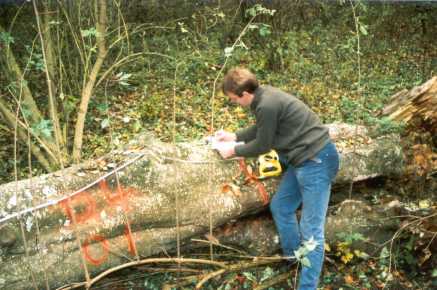
Felling and jointing
To fell a tree requires the right skill and experience, as well as chainsaws, wire ropes, winches and safety equipment.
 Occasionally, as in the picture to the left, a tree surgeon is necessary. In this case, the branches of a dead sessile oak tree were being cut back to reduce the damage that might be caused to adjacent trees, a fence and a gateway… The idea was to fell the main part of the very large tree between the gateposts of the 8 ft gateway 30 feet away from the trunk – that’s quite a challenge! But it was the only way to minimise the damage caused when the tree came down. The photo shows the tree surgeon up in the tree (about 30 feet up or more) having just cut back a branch (which is pictured in mid-air). When he later felled the tree it caused very little damage the nearby oak… and landed between the gateposts. Perfect!
Occasionally, as in the picture to the left, a tree surgeon is necessary. In this case, the branches of a dead sessile oak tree were being cut back to reduce the damage that might be caused to adjacent trees, a fence and a gateway… The idea was to fell the main part of the very large tree between the gateposts of the 8 ft gateway 30 feet away from the trunk – that’s quite a challenge! But it was the only way to minimise the damage caused when the tree came down. The photo shows the tree surgeon up in the tree (about 30 feet up or more) having just cut back a branch (which is pictured in mid-air). When he later felled the tree it caused very little damage the nearby oak… and landed between the gateposts. Perfect!
Even in more conventional felling, care is taken to ensure the tree falls in a sensible direction to cause minimum damage to other trees or property, and also so that the tree lands as “softly” as possible, thus minimising the risk of “shake” (cracks) in the timber of the tree.
Not all trees need felling though, as much of the timber taken into the Lisnavagh Timber Project is the result of storm damage and they are already down – hopefully without too much damage to themselves or anything else.
The next stage is to joint the trees. The timber that is deemed suitable for sawmilling is jointed (cut) out of the tree in suitable lengths. Ideally, the logs that result from the jointing are straight, free of big knots and at least 18″ in diameter. The rest of the tree is perhaps used for firewood, or left in the wood to rot back into the soil (as a valuable contribution to a woodland’s extremely diverse ecosystem).
Forwarding or Extraction of timber
This is the removal of the logs of timber, after felling and/or jointing, from a wood to a point where they can be collected by a lorry or tractor & trailer for delivery to the sawmill.
Extraction of logs can be carried out by using a number of alternative methods, including a forwarder (pictured left), winches, ponies or a standard JCB type digger. At Lisnavagh we have used all of these methods, and the choice depends upon the circumstances, but we frequently use our own (quite old!) Massey Ferguson 50B digger with a grab fork.
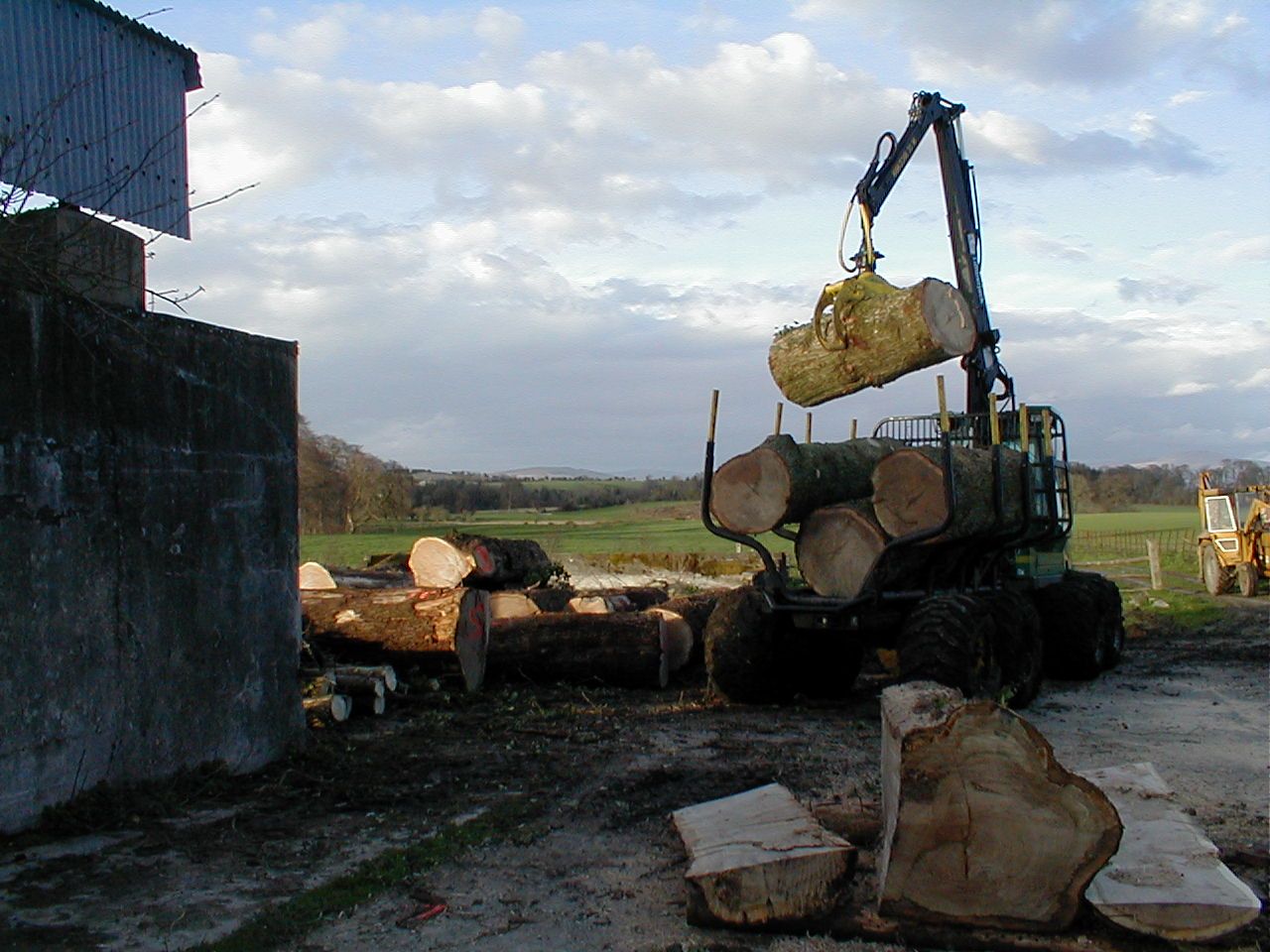
A forwarder (such as the one pictured above) is probably the fastest and most efficient way there is to remove timber from a wood, but especially in quantity. These amazing tracked or rubber wheeled machines can roll over pretty much anything in a woodland and pick up logs well over a tonne in weight. The logs go into the “basket” on the back. The machine can travel quite quickly though woodland or on the road.
Our Massey Ferguson 50B, which we bought 2nd hand in 1979, is a bit of an old faithful! This workhorse is still going after many years of constant service. To date, this machine has removed most of the timber used in the Lisnavagh Timber Project.
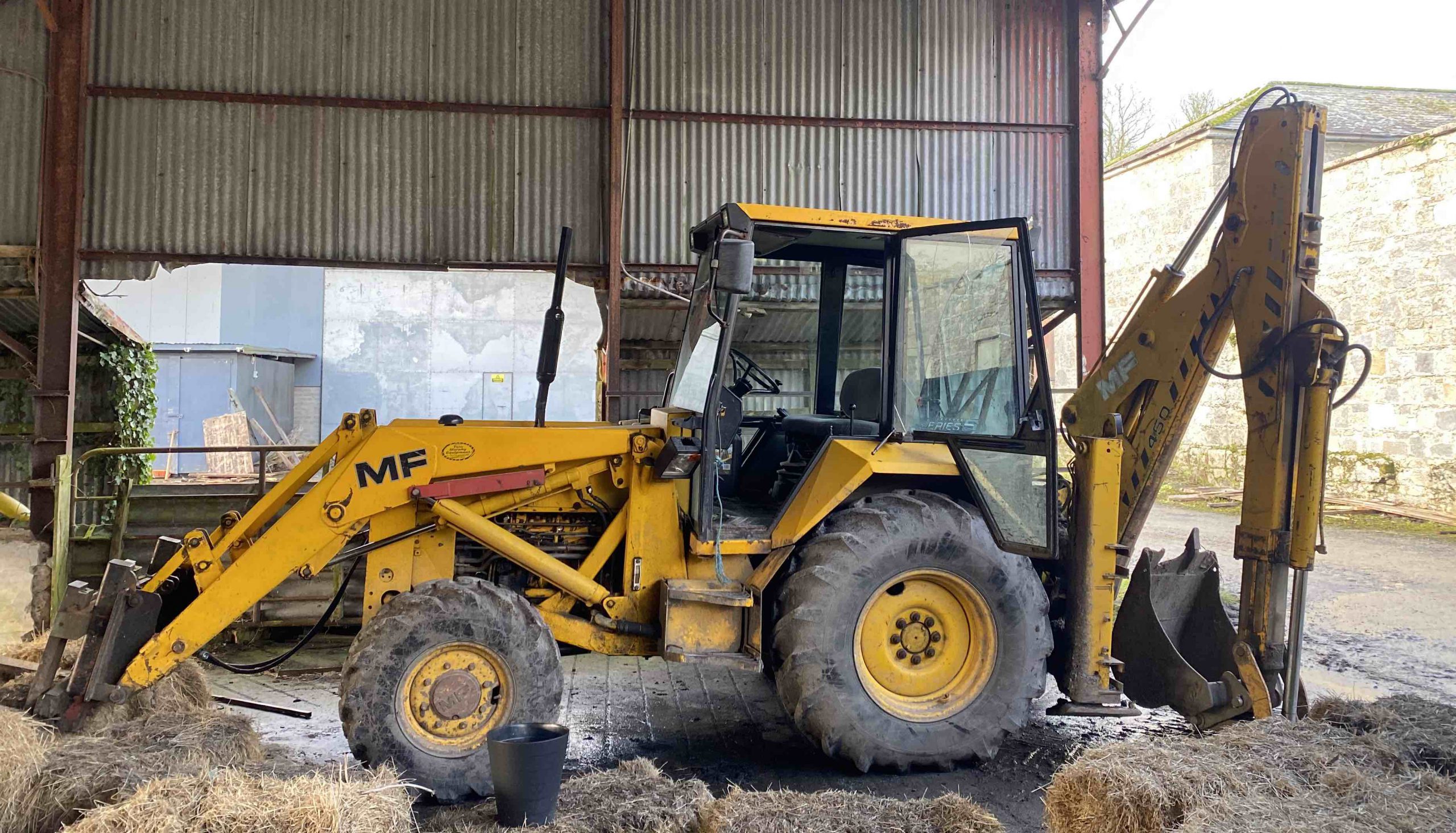
The method that may cause least damage in woodland is towing logs out of a wood with horses or ponies. It is a wonderful sight and we hope to be able to show you some pictures shortly, as we are expecting a pony team here next week. The usefulness of ponies is limited by the size of the logs being extracted.
Transport to sawmill
Once the logs are extracted from the wood (i.e. “at roadside”) they are collected and brought to a sawmilling yard.
Most timber travelling any distance will be collected by a lorry & trailer, such as the one in the (enlargeable) picture to the right. Typically, at least 20 tonnes of timber can be loaded onto these lorries (using their own crane and grab).
If the timber is very local to the sawmill, or in our case on our own land, it works out far cheaper to use a digger and a tractor & trailer to collect and deliver the timber as it is jointed & extracted from the woods. This usually involves up to perhaps four or five tonnes of timber per load.
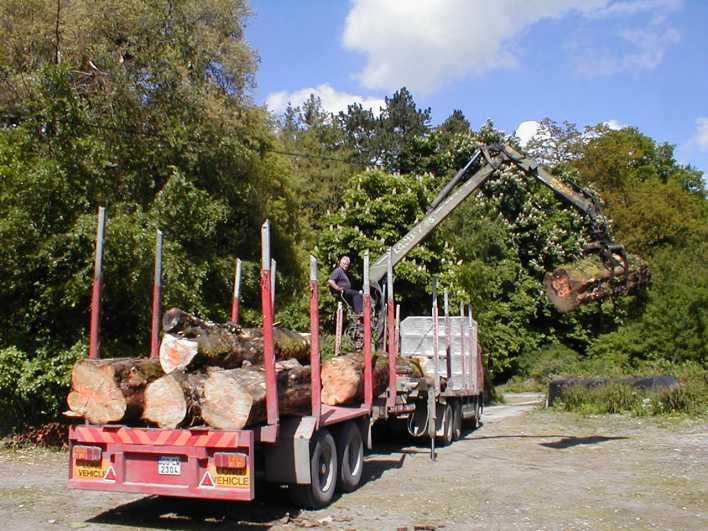
Our Story
Our Practices
- From the Wood to the Sawmill
- Sawmilling and Drying
- Finishing and Storage
- Sustainability, Traceability, and Forest Management
Our Mission
To grow, source, condition and supply fully traceable home-grown Irish hardwood timber, from sustainable resources, to Ireland’s furniture makers and woodworkers.

William Bunbury
MANAGING DIRECTOR

